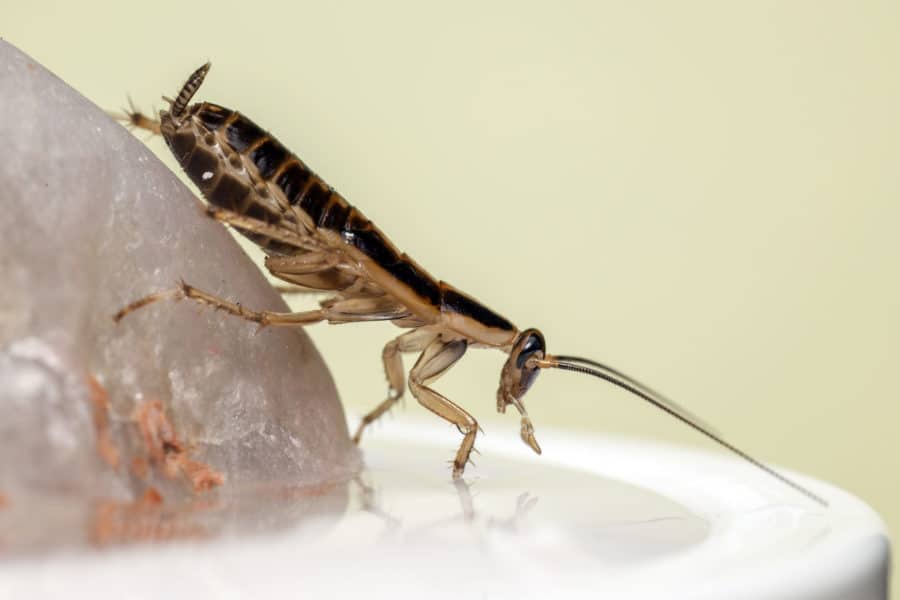READY TO GET STARTED?
REQUEST A FREE ESTIMATE
Fill out the form below or call (888) 466-7849 for a free, no-obligation estimate.

German roaches are one of the most common household pests and also one of the most difficult to get rid of. It is important to understand how to identify these cockroaches live and what they are attracted to in order to understand how to get rid of them.
These roaches are light brown to tan in color with 2 black horizontal stripes behind their heads. They are smaller in size (adults usually grow to about 1/2″ in length) and although they have wings, they rarely fly and prefer to run instead. They are most often found indoors, preferring warm humid environments like the ones found in your kitchen or bathroom. They will eat almost anything but prefer crumbs, spills, pet food, book bindings, soap, and toothpaste. German cockroaches are often brought into your home on dry goods, such as bags, boxes, cardboard, used appliances, and furniture.
German roaches are dangerous to humans because they can spread bacteria and contaminate surfaces with salmonella and E. coli. Their feces, cast skins, and saliva can cause allergic reactions which can subsequently trigger asthma.
Common signs of German cockroaches include droppings which are small and black and look like pepper, commonly found in drawers and cabinets and on the tops of doors; egg cases left behind by females; and a mild, musty odor that gets stronger as their populations grow.
These pests are nocturnal and usually only scavenge at night, making it difficult to know you have a cockroach infestation until it is already established. Once inside, German roaches can reproduce quickly, making them very difficult to eradicate. Each female is capable of producing 4 to 6 egg cases per life cycle and can live anywhere from 100 to 200 days.
Because they can be so hard to get rid of, the best way to eliminate German roaches is to prevent them in the first place. Here are some German roach prevention tips you can use in your home.
If you have a problem with roaches or any other pests, contact your local pest control company to properly identify the type of pest you are dealing with and recommend the most appropriate treatment plan going forward.
Are Carpenter Ants Active During the Winter?
Categories